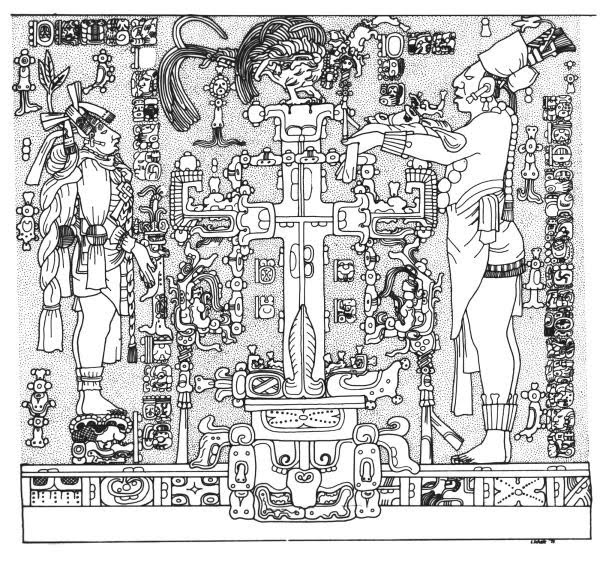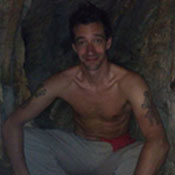It has long been known that in the Classic Maya language of the inscriptions, the word for 'sky', chan, is often expressed or replaced with glyphs for 'four' or 'snake'. This wordplay, which has persisted in many modern Mayan languages across the centuries, happens to illuminate several previously-impenetrable Mayan images with meaning. Thus, for example the Classic Maya image of the World Tree as being bedecked with foliage with its cross like central bar represented as a double-headed serpent makes more sense when one considers that the Classic Maya translation of 'world tree' was wakah chan.
|
Across the various Mayan languages, whether ancient, colonial or modern, there exists a nexus of words and wordplays centred on the sounds chan, kan, k'an and ka'an which reveal interesting dimensions to Mayan conceptions of the sky. This wordplay symmetry is broken however in Tzotzil, a language of the highlands of Chiapas, where the word for sky is vinajel, but it nonetheless demonstrates something fascinating about the Mayan cosmovision.
It has long been known that in the Classic Maya language of the inscriptions, the word for 'sky', chan, is often expressed or replaced with glyphs for 'four' or 'snake'. This wordplay, which has persisted in many modern Mayan languages across the centuries, happens to illuminate several previously-impenetrable Mayan images with meaning. Thus, for example the Classic Maya image of the World Tree as being bedecked with foliage with its cross like central bar represented as a double-headed serpent makes more sense when one considers that the Classic Maya translation of 'world tree' was wakah chan.
0 Comments
In the Mexico Room of the British Museum, London, are three lintels (two originals, one archival cast) from the Classic Maya city of Yaxchilan in the state of Chiapas, Mexico. These exceptionally-crafted public artworks depict a fascinating ritual to evoke a Divine Ancestor, thus broadcasting both a sense of royal propaganda and of sacred intimacy, but it is the image of visionary beholding vision which is particularly interesting, disclosing an archaic expression to the scene. The Classic Maya city of Yaxchilan is one of several archaeological sites located in close proximity to the Usumacinta River along the border between Guatemala and the Mexican state of Chiapas. It sits just on the Mexican side in a meander of the river, likely a vital spot since the river passed through the city and allowed the rulers to control – and perhaps impose duties upon – the trade and river traffic moving from the mountains towards lowland cities such as Palenque.
Anciently known as Pa' Chan ('Broken Sky') or Siyaj Chan ('Born from the Sky'), Yaxchilan's documented history begins around the mid 4th century AD but the city flourished in the Late Classic period (6th-9th centuries AD), dominating nearby Bonampak and the Usumacinta corridor, as well as establishing rivalries with both Piedras Negras and Palenque downstream.
*** *** *** The language of this dedicatory prayer is Tzotzil - li batz'i k'op e, 'the true words' - a Mayan language of the highlands of Chiapas, Mexico. It follows a traditional pattern of speaking to saints and ancestors, although the words chosen are my own. It is offered with sincerity to our collective ancestral humanity as I begin this initiative.
|
ARCHAIC VISIONS
|





 RSS Feed
RSS Feed






